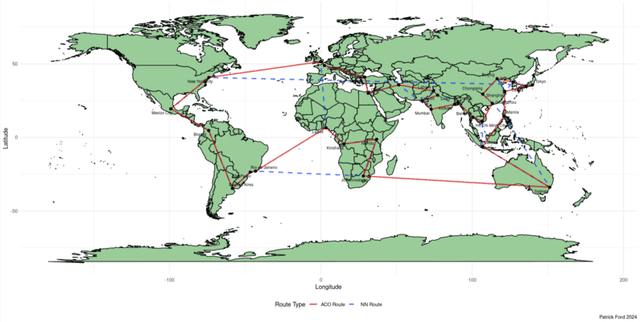Around the World in 80 Days Text Data
Data Science and Analytics
Tags and Keywords
Trusted By




"No reviews yet"
Free
About
This dataset provides a digital rendition of Jules Verne's seminal adventure novel, "Around the World in Eighty Days," originally published in 1872. The novel recounts the daring global journey of Phileas Fogg, an unflappable English gentleman, who wagers £20,000 that he can circumnavigate the globe in just 80 days, an extraordinary feat given 19th-century transportation limitations. Accompanied by his loyal valet Passepartout, Fogg navigates diverse transportation methods and encounters unexpected obstacles, including a detective who mistakenly believes him to be a fugitive. Beyond being a thrilling adventure, the novel celebrates the optimism of the Industrial Revolution, symbolising technological progress and its ability to connect diverse cultures. This dataset supports modern analyses, including sentiment analysis to explore the emotional depth of the novel and readability scoring, bridging classic literature with contemporary computational tools and data-driven insights. It serves as a foundational text for exploring themes of exploration, globalisation, and personal discovery.
Columns
The dataset is derived from the whole book and primarily contains textual content. While specific column names for the main text are not detailed in the sources, it is implied to contain the novel's text suitable for natural language processing tasks. An associated dataset, "World_Top_33_Cities.csv", is also referenced for optimisation problems, suggesting columns related to city data.
Distribution
The primary data file is provided in CSV format. It represents the entirety of the book. Specific numbers for rows or records for the main text dataset are indicated as '1686' unique values from the whole book, although a precise record count is not explicitly stated.
Usage
This dataset is ideal for various applications and use cases:
- Literary Analysis: Apply sentiment analysis to understand the emotional arc and character development within the novel.
- Readability Scoring: Utilise the text for Flesch-Kincaid readability assessments, as it has been scored at around 13 to 15 years old.
- Natural Language Processing (NLP): Develop and test NLP models on classic adventure literature.
- Data Visualisation: Create visual representations based on textual patterns or analytical results.
- Historical and Cultural Studies: Investigate themes of exploration, globalisation, and 19th-century technological optimism reflected in the text.
- Optimisation Problems: Though not directly part of the main text CSV, the project context highlights its use with the Travelling Salesman Problem for journey optimisation.
Coverage
The novel details a global circumnavigation, featuring diverse locations around the world. The narrative is set in the 19th century, specifically depicting transportation and societal norms of 1872. It reflects Eurocentric views and colonial perspectives prevalent during that era.
License
CC-BY-SA
Who Can Use It
- Data Scientists and Analysts: For literary analysis, sentiment analysis, and applying computational tools to classic texts.
- Literature Scholars and Students: To gain new insights into Jules Verne's work through data-driven methods.
- Researchers in AI & Machine Learning: For training and testing NLP models on historical adventure fiction.
- Educators: As a resource for teaching literature, history, and the application of data science in humanities.
- Enthusiasts of Adventure Literature: To explore the underlying structure and themes of a timeless story.
Dataset Name Suggestions
- Around the World in 80 Days Text Data
- Jules Verne's Eighty Days Novel CSV
- Global Journey Literary Dataset
- Phileas Fogg's Adventure Text
Attributes
Original Data Source: Around the World in Eighty Days; NN vs ACO
Loading...
Free
Download Dataset in ZIP Format
Recommended Datasets
Loading recommendations...
